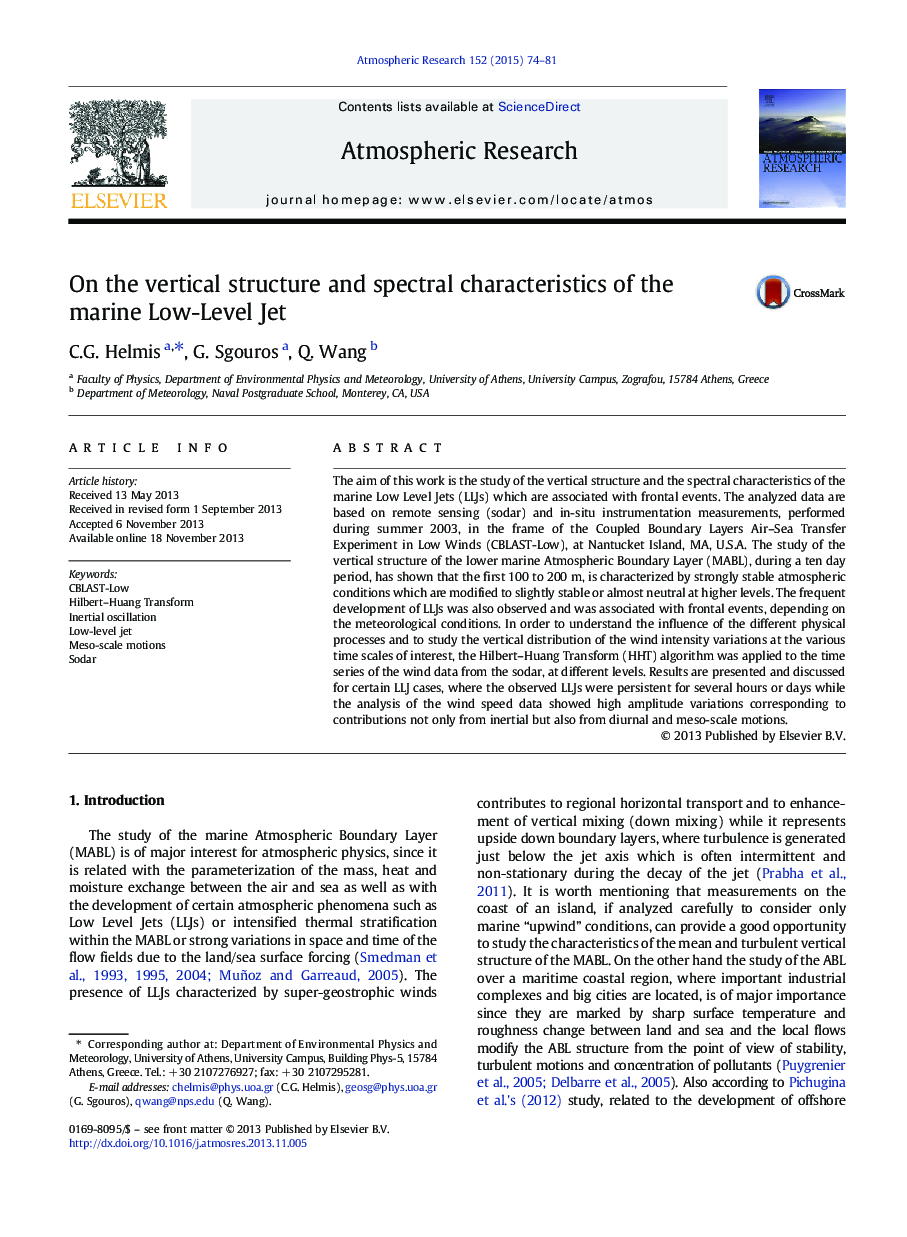| Article ID | Journal | Published Year | Pages | File Type |
|---|---|---|---|---|
| 4449833 | Atmospheric Research | 2015 | 8 Pages |
•The spectral characteristics of the marine Low Level Jets (LLJs) were studied.•The influence of the different physical processes on LLJs was also studied.•All LLJ cases are associated with shallow baroclinicity induced by the slopping inversion.•Persistent LLJ was associated with large scale baroclinicity and pressure gradient.
The aim of this work is the study of the vertical structure and the spectral characteristics of the marine Low Level Jets (LLJs) which are associated with frontal events. The analyzed data are based on remote sensing (sodar) and in-situ instrumentation measurements, performed during summer 2003, in the frame of the Coupled Boundary Layers Air–Sea Transfer Experiment in Low Winds (CBLAST-Low), at Nantucket Island, MA, U.S.A. The study of the vertical structure of the lower marine Atmospheric Boundary Layer (MABL), during a ten day period, has shown that the first 100 to 200 m, is characterized by strongly stable atmospheric conditions which are modified to slightly stable or almost neutral at higher levels. The frequent development of LLJs was also observed and was associated with frontal events, depending on the meteorological conditions. In order to understand the influence of the different physical processes and to study the vertical distribution of the wind intensity variations at the various time scales of interest, the Hilbert–Huang Transform (HHT) algorithm was applied to the time series of the wind data from the sodar, at different levels. Results are presented and discussed for certain LLJ cases, where the observed LLJs were persistent for several hours or days while the analysis of the wind speed data showed high amplitude variations corresponding to contributions not only from inertial but also from diurnal and meso-scale motions.
